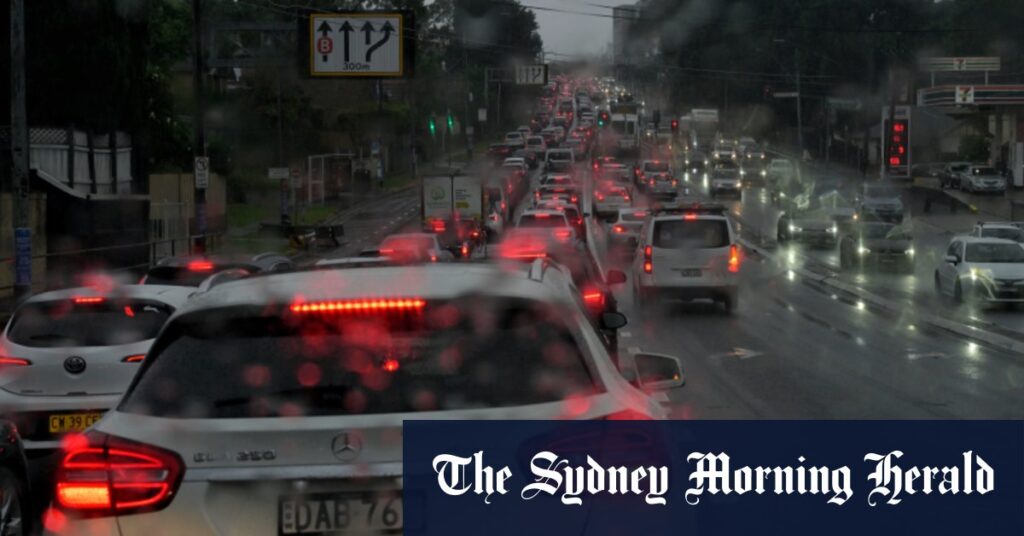Sydney’s traffic is actually on course to exceed pre-COVID-19 levels within a year or two, based on government data (“Sydney’s traffic paradox: More cars, less traffic”, September 22). In 2018– 19, there were 42.6 billion vehicle kilometres. Post-COVID (2019–20), the figure declined to 36.4 billion km. But last year (2022–23), the total rebounded to 40.7 billion km, causing more than 5 billion tonnes of CO² emissions. Continued and unsustainable traffic growth will be fuelled by the Minns government’s new toll caps/subsidies and ceaseless road-building agenda, combined with workers returning to the office. Yes, some roads now have significantly less traffic than in 2019. Traffic volume on Victoria Rd declined significantly after the Rozelle Interchange opened last year – because Victoria Rd was throttled to give priority to WestConnex traffic. On the other hand, Parramatta Rd now has more traffic than it did in 2019.History shows that traffic always expands or contracts over time to fill the space provided for it due to the way congestion affects our travel, destination and home location choices. The question for the Minns government is how it wants to give a growing population better and more equitable access to jobs, education and services. By making it easier for households to drive halfway across the city in costly, space-hungry, highly polluting and dangerous vehicles? Or by making it easier for households to live close to the places they need to go, and to get around using affordable, clean, healthy, space-efficient and energy-efficient public and active transport?
Chris Standen, Erskineville
Victoria Rd, has traffic been scared away?Credit: Sydney Morning Herald
Housing lessons from Germany
Sydneysiders would need a (high) six-figure income to afford a home in almost any pocket of the city (“The big pay day you need to buy in Sydney”, September 22). It’s said that some Australians will be excluded from home ownership, and “there’s always been an active rental market in Australia, and the size of that market is increasing”. Well, therein lies the solution: governments and authorities should not expect people to still want to aspire to owning a home; few can afford it without the bank of Mum and Dad. But mainstream renting has to be made acceptable and – dare I say – desirable. What needs to be done, beyond hand-wringing and short-term, which are controversial government initiatives geared to get a minority into homeownership they can’t really afford, that don’t address the problem at the core? Public housing, but especially building-to-rent, by both government and industry. Businesses – especially insurance companies – must be incentivised with tax stimuli to build-to-rent at affordable fixed rents, with rent rises linked to the CPI, while wage rises are equal or a little more than the CPI. This is the only way the housing crisis will be solved; look to Germany for how it can be done. Carsten Burmeister, Mosman
Banishing bullying
The article about bullying (“Public schools to step up efforts on scourge”, September 22) was interesting reading. Thirty years ago, our high school with a full-time school psychologist had the bullying management program up and running. The bully boxes throughout the school were monitored each week, and the who, where and what were identified in minutes by a full-time school psychologist and a dedicated welfare team. Classroom activities, separate groups for bullies and victims were formed, and skills learnt by all. Thirty years later, schools have to manage the internet as well as every society issue imaginable, plus teach a school curriculum. It’s time to get real in public schools by matching private school ratios for psychologists as a minimum step into this decade for public schools. Giving schools a list of more rules just won’t cut it. Quick fixes won’t work in 2024. Cecily Chittick, Wyong
Cost of cash
I don’t doubt the accuracy of Shane Wright’s article (“The costly business of cash has to change”, September 22), but it must be pointed out that the 3.9 per cent cost of cash is already included in the price that a business charges, along with all of the other costs. Surely the price of a cashless transaction should not include the cost of cash? That is, the 3.9 per cent cost of cash should be deducted from the price when the transaction is cashless. Using the $5 example, the price should be $4.81 (rounded up) plus the 1 per cent surcharge – $4.90 (rounded up from $4.86).
Richard Volzke, North Ryde
Handouts don’t add up
Your correspondent expresses concern that over one-third of government expenditure is on welfare and social security and claims that “… more than a third of our population doesn’t work and relies on handouts …” (Letters, September 22). Looking at the 2023 official government reports on these matters, over 40 per cent of welfare recipients are on the aged pension, 15 per cent on disability pensions, some on other categories such as family or carer allowances, and under 12 per cent of welfare recipients (under 5 per cent of the population) are on Jobseeker (unemployment benefits). The “handouts” to the unemployed who are of working age and have no disability which prevents them working are below $800 per fortnight. As someone who worked until retirement age and now on a good superannuation income, I certainly don’t resent this but regard myself as very fortunate.
Al Svirskis, Mt Druitt
- To submit a letter to the Sydney Morning Herald, email letters@smh.com.au. Click here for tips on how to submit letters.
- The Opinion newsletter is a weekly wrap of views that will challenge, champion and inform. Sign up here.
Read the full article here

